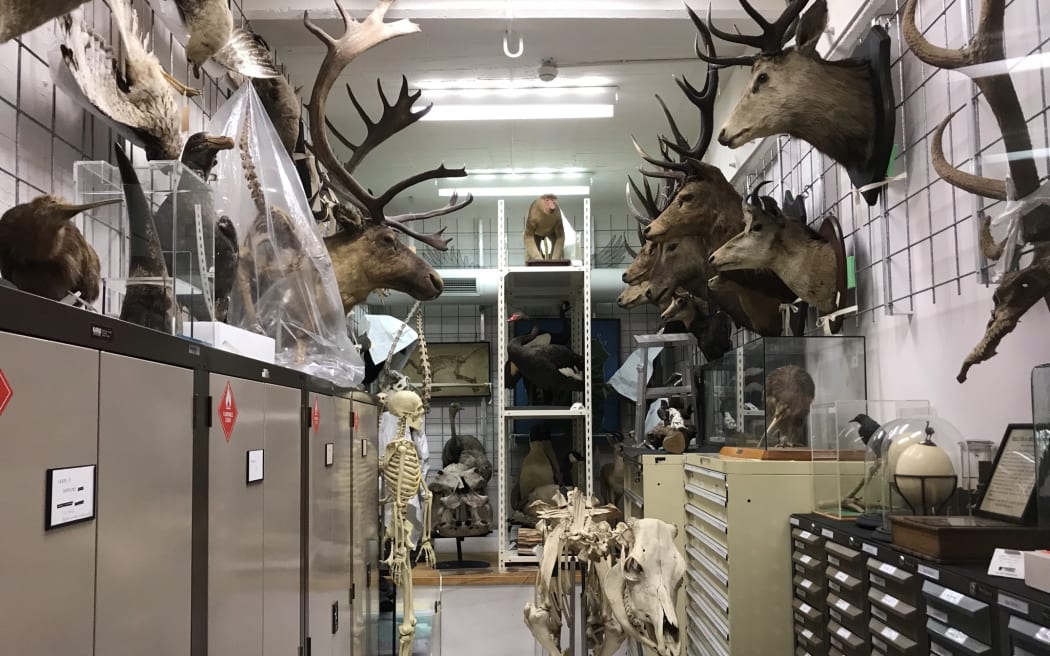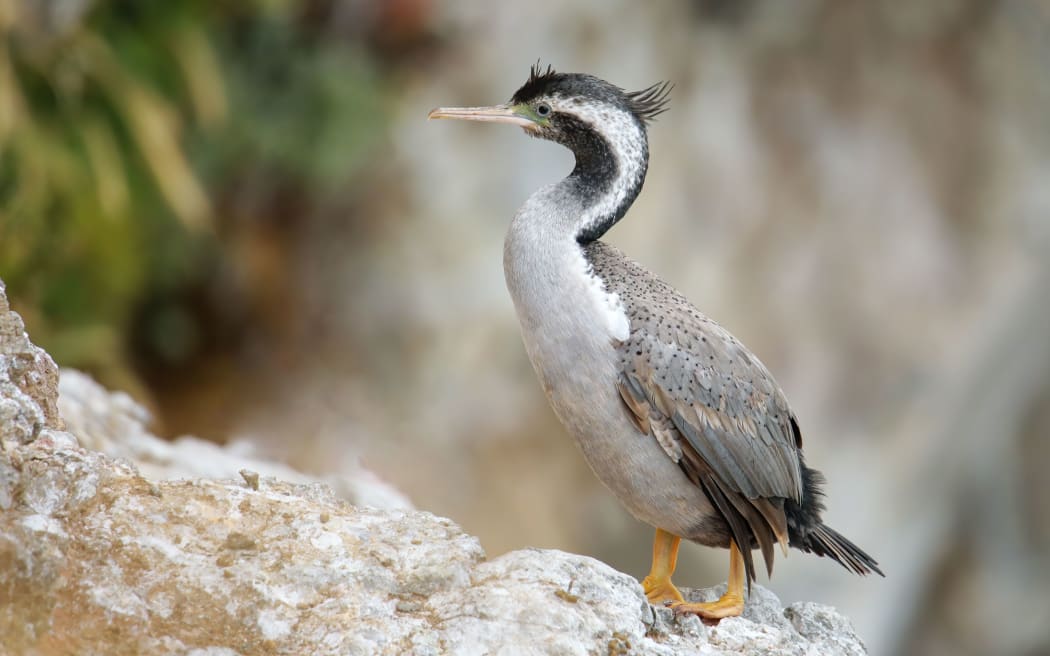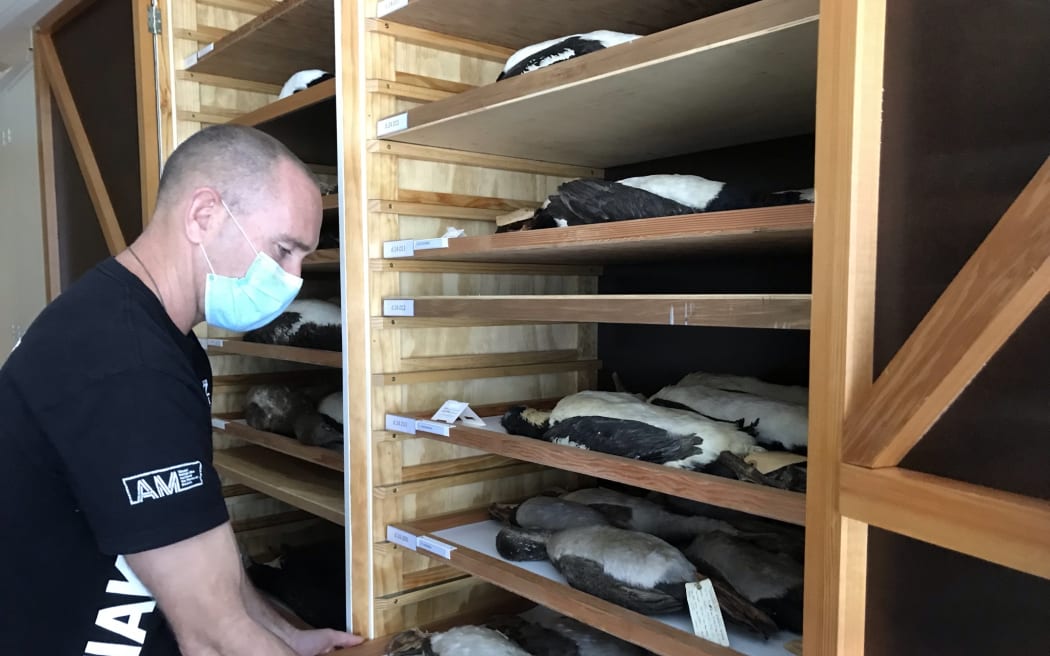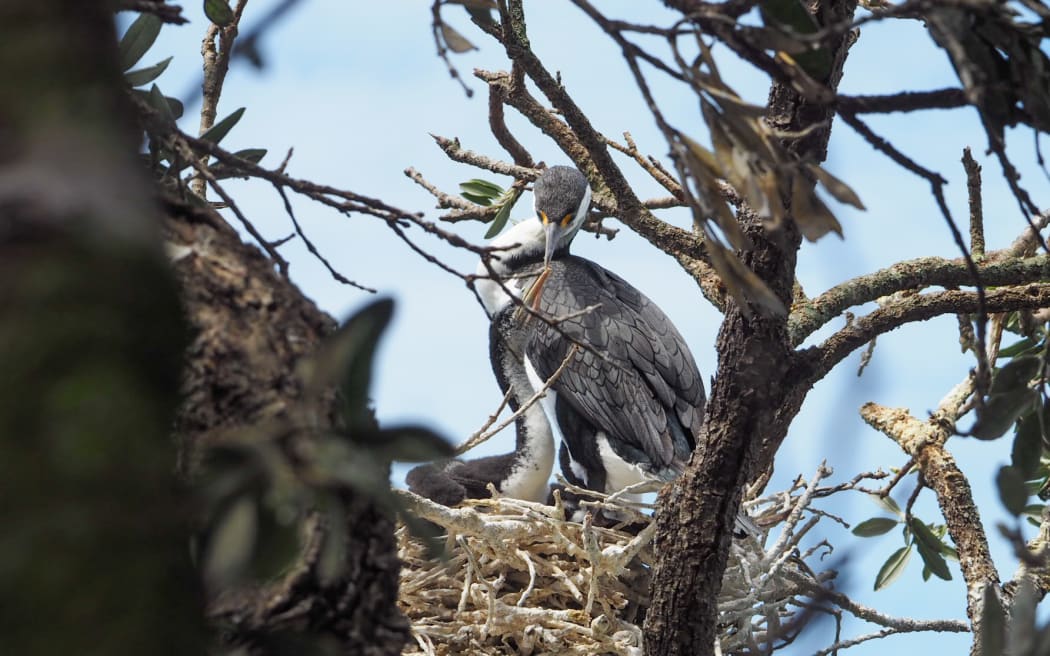“A menagerie” is how curator Dr Matt Rayner describes the land vertebrate collection in the backrooms of the Auckland War Memorial Museum.
There’s a horse’s head, stuffed peacocks sitting on a workbench, and the back corridor is filled with large specimens – moa, emu, and ostrich as well as reindeer, caribou and rhinoceros heads and skeletons.

The "menagerie" in the backrooms of the Auckland War Memorial Museum. Photo: RNZ / Claire Concannon
Follow Our Changing World on Apple Podcasts, Spotify, Stitcher, iHeartRADIO, Google Podcasts, RadioPublic or wherever you listen to your podcasts.
We’re most familiar with museum galleries: carefully curated spaces, designed to tell stories. Precise taxidermy allows animals to stand or perch as they would in real life.
But in most museums, these front-facing displays are only a tiny percentage of the collections they house. Behind the scenes, there’s a lot more going on.
As a curator, Matt works on public displays – but he also has his own area of research: seabirds.

Spotted shag (Phalacrocorax punctatus) at Taiaroa Head, Otago Peninsula, New Zealand. Photo: Don Mammoser
For a recent project, Matt wanted to know: what’s happening to the seabird residents of Tīkapa Moana the Hauraki Gulf across time? It’s a tricky question to answer given that seabirds haven’t been particularly well studied over a long period of time.
“Many of our land birds have been counted for decades, whereas we’re just catching up with seabirds,” he says. So, in the absence of long-term data, Matt and his colleagues turned to the backroom specimens held at museums for clues.
Matt scoured the collections at Auckland Museum, Te Papa Tongarewa, and Canterbury Museum for five seabird species found in the Hauraki Gulf: kāruhiruhi / pied shag, pārekareka / spotted shag, kororā / little penguin, tara / white-fronted tern, and tarāpunga / red-billed gull.
He focused on specimens collected from the Gulf over the years, all the way back to the 1880s. Then, he sourced feathers from his chosen specimens.
Matt also collected feathers from contemporary live birds during fieldwork in the Gulf, assembling a timeline of seabird feathers stretching from the 1880s to now.

Dr Matt Rayner with the Auckland War Memorial Museum's spotted shag specimens. Photo: RNZ / Claire Concannon
Matt analysed certain elements in the chemical makeup of the feathers using stable isotope analysis. Looking at the stable carbon and nitrogen isotope signatures from these feathers can give Matt general insights into what the birds were eating and where they were living when the feathers were grown.
The nitrogen isotope analysis didn’t indicate much change in the types of food these birds were eating (such as fish or crustaceans and squid).
But the carbon isotope results for three of the species – the pied and spotted shags and the kororā – suggest that these birds have changed their habitat across time.

A kāruhiruhi pied shag parent feeds its chick in a nest on Ōtata Island, part of the Noises island group in the Hauraki Gulf Tīkapa Moana. Photo: Ellen Rykers
In the context of well-documented issues with the Hauraki Gulf ecosystem and declining bird numbers, the results suggest that the birds are being forced further afield. With the Government’s Revitalising the Gulf strategy in the works, Matt is hoping that new high-protection areas will be established to help the seabirds of Tīkapa Moana thrive.
To learn more:
-
Celebrate the pīwauwau / tuke / rock wren underbird winner of the 2022 Bird of the Year competition by listening to this episode all about them from January 2020.
-
Want to learn more about how the power of both stable and radiogenic isotopes can be harnessed to tell us about history? Listen to ‘Using chemistry to uncover the past’
-
As reported in this paper, stable isotope analysis on feather samples from museums has also been used recently to investigate the past diet of kea.
-
The ‘Revitalising the Gulf’ plan can be found on the Ministry for Primary Industries' website or via the Department of Conservation. The proposed Noises Islands marine protection area was added on to this strategy after it was launched, making it the 12th high protection area.


